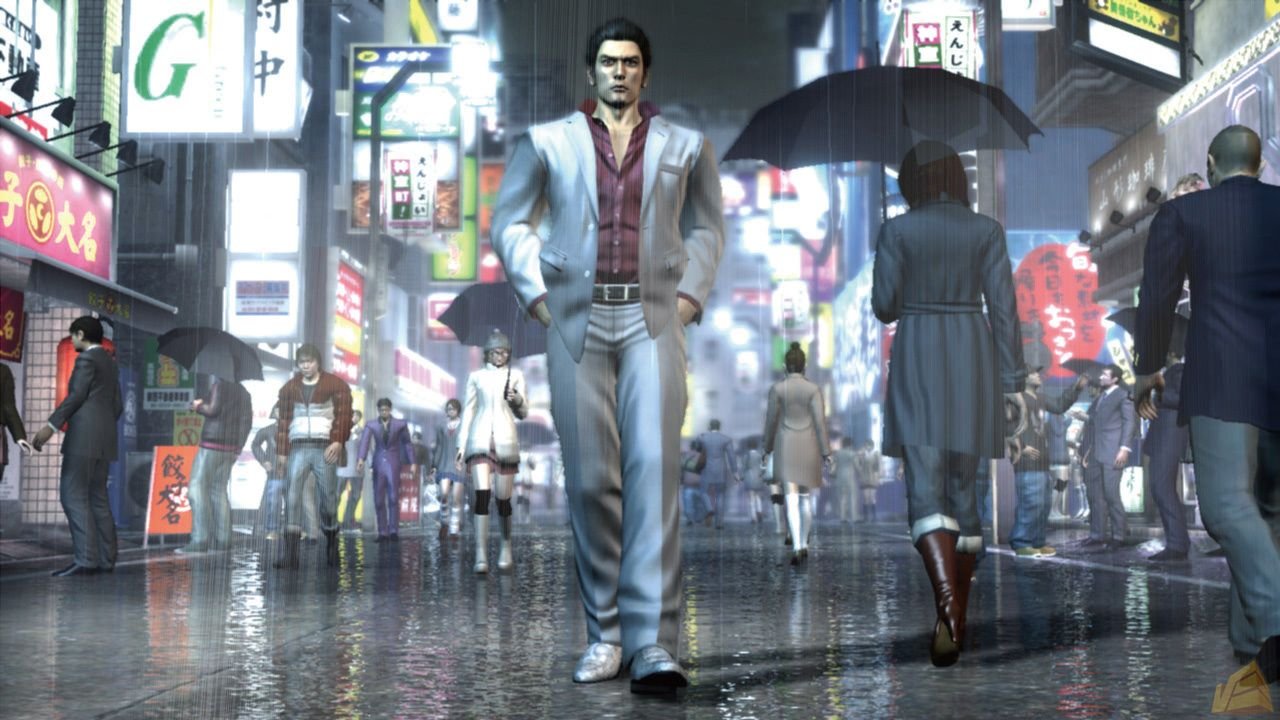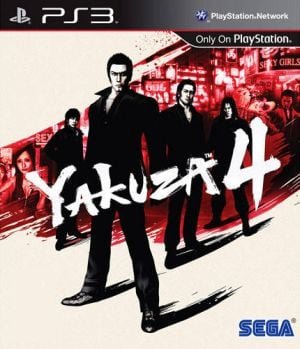There’s something very strange about the Yakuza series. If ever there was a game that perfectly portrayed the vast difference in gaming cultures across oceans, this game is it. On the far side of the Pacific, it’s a massive, pop culture phenomenon that is the Japanese equivalent of Halo or Call of Duty, with four games in the main series, a massive fan base, merchandise up the wazoo, and even famous models and porn stars vying to compete to appear as hostesses in each new iteration of the game. Here in the West, it’s that Crazy Japanese Game that barely anyone knows about. And now the fourth release of the series is finally here, and unfortunately, once again, it’s unlikely that many will realize how good it is.
Kiryu Is Back With Friends
In this fourth outing of the game, and its second on the PS3—not counting 17th century Kenzan spin off—Sega takes a slightly different approach to the story. Where past games had heroic Ex-Yakuza member Kiryu Kazuma going solo, he now shares the story with three other main characters; Akiyama, an idiosyncratic money lender who puts potential clients through life-altering tests, Saejima, an escapee from death row out to find out the truth before the police catch up with him, and Tanimura, a shady cop who’s underworld dealings are actually quasi-legal charity work for abused foreign workers in Japan. The plot is focused on a Yakuza conspiracy that dates back to 1985, and becomes more complex and labyrinthine from there.
Once you start getting into the technical side, Yakuza 4 reveals just how much of a niche title it is. The big point of contention is that it uses the exact same engine as Yakuza 3 did, made all the more obvious by the fact that it also takes place in largely the same location (as it did in Yakuza and Yakuza 2), that being the fictional district of Kamurocho, a stand in for the real world Kabukicho red light district of Shinjuku in Tokyo. The game, despite being an exclusive, is not even as technically impressive as some of the top-tier multi-platform titles like Mass Effect 2, and is still prone to some draw in within the environments, though happily, it also has an absolutely rock solid frame rate for the actual gameplay. What it lacks in polygon pushing it makes up for with an obsessive attention to detail, some moody art direction, and stunning facial capture that manages to convey the nuance of Japanese performance. Sound has always been a high point of the series and the same holds true here, with a lush, Dolby Digital audio presentation that’s not as heavy on the bass as the previous game, but adds a nice variety of jazz-inspired tunes to the hard rocking proceedings to give it more of a New York, noir feel at times. The voice acting is, of course, brilliant, since the Japanese have always taken voice acting seriously, with some incredibly earnest delivery from every character. It’s not fully voiced throughout, but when the characters do speak, they make it count.
Busting More Skulls In Kamurocho
Both the pro and con of Yakuza 4 is that it’s the same old Yakuza game you’ve been playing the last few years. It’s not just the engine that’s identical, Kamurocho is still the same, and the game feels even smaller thanks to the omission of Okinawa, an entire other urban playground that gamers could explore in Yakuza 3. There is now the addition of underground mall/sewer environments, as well as an expansion of Kamurocho itself with new roof-top environments for the occasional chase. Yakuza 4 is essentially more of the same with a few tweaks here and there to add a little bit of newness to an otherwise familiar package. This isn’t actually as bad as it sounds, since it was the same proposition with Yakuza and Yakuza 2, the only major leap coming when it moved to the PS3 with the 3rd game, and even then, the combat, Kamurocho, and basic features like the expanse of mini-games were all migrated over. In some respects, Yakuza is very much a budget title. Sega is re-using assets both art and engine-wise, and still uses the older, almost nostalgic device of text boxes for the majority of the game’s content, spiced up with voiced cut-scenes here and there.
Of course, the big thing is fans know all of this, and this is a game made clearly for fans. The typical, mainstream, Western gamer will not “get” Yakuza. It’s an unapologetically Japan-centric game, it stubbornly maintains its stellar Japanese voice acting rather than localizing it with an English dub, and it has numerous quirky—perhaps even baffling or outright offensive/sexist—elements like the hostess maker, or power spiking a ping pong ball at the breasts of a bathrobed girl to make her fall to the ground so a quick button press can engage “ogle mode,” zoomed at her cleavage. It’s not a game made for a politically correct, average Western gamer as it doesn’t make any cultural concessions at all. But for long time fans of the series, there’s plenty to love in the game despite the lack of any major innovations.
The three new characters each have distinctive combat styles that play out very differently, although Kazuma is still the most balanced—and potentially lethal—of all of them. The game has actually been made slightly easier to play with new assists such as a character at the “Shellac” bar that specifically points out the location of sub-stories for fans that hunt these elements faithfully, and chase sequences are more forgiving this time, even letting you throw objects at your target. All the mini-games are back—except for the trivia game “Answer X Answer”—including the hostess-maker and Mahjong mini-games absent from the last localized version. New mini-games include ping pong and even a fighter maker along the same lines as the hostess maker. The wealth of mini-games options does the usual job of making a stay in the small confines of Kamurocho feel much more expansive and time-consuming.
But in the end, the real reason that fans play a Yakuza game is because of the story, and once again Sega delivers. While the four characters are a little uneven in terms of appeal (I personally found the cop Tanimura to be the “weakest” of the new characters, but even his story was engaging) the complex politics of Yakuza culture get another great turn in the game with heightened stakes, betrayals and genuinely moving drama. For typical Western gamers, Yakuza 4 still gives no reasons to jump in now, as it asks a lot of its players and demands familiarity with the story, even with massive video recaps of the last three games. But for fans for the franchise, they have every reason to go out, get this game, and enjoy its unique offerings. This is definitely a niche title, but for the niche it targets, the game is a resounding success.






